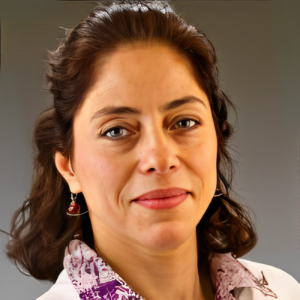Menopause, PCOD and Climacteric Period
Menopause is a natural process, not a disease or condition. Menopause occurs 12 months following a woman's last menstrual period. The menopausal transition, also known as perimenopause, occurs in the years preceding up to menopause, when women may experience changes in their monthly cycles, hot flashes, or other symptoms. Between the ages of 45 and 55, the menopausal transition usually begins. It normally lasts seven years, although it can last up to fourteen years. The length of time it takes can be determined by lifestyle factors such as smoking, the age at which it begins, and race and ethnicity. The body's production of oestrogen and progesterone, two hormones produced by the ovaries, varies dramatically during perimenopause. Each woman's menopausal transition is different and affects her in different ways.
PCOD (Polycystic Ovarian Disease) is a hormonal condition that impacts between 5% to 10% of women of childbearing age (12 to 45-years). The disorder polycystic ovarian syndrome (PCOS) alters a woman's hormone levels. PCOS causes women to create more male hormones than they should. This hormonal imbalance causes them to miss menstrual periods, making it difficult for them to conceive. Hair growth on the face and body, as well as baldness, are all symptoms of PCOS. It can also lead to long-term health issues such as diabetes and heart disease. Birth control pills and diabetes medications (which treat insulin resistance, which is a sign of PCOS) can help correct the hormone imbalance and alleviate symptoms.
Climacteric refers to the stage of life that begins with the decline in ovarian activity and ends with the loss of ovarian function. Peri-menopause, menopause, and post-menopause are all included in the term. Climacteric is a natural change of life that can have a variety of health repercussions, such as menopausal symptoms, osteoporosis, coronary heart disease, and Alzheimer's disease. The important premise is that women experience menopause in a variety of ways, including natural menopause, surgical menopause, early menopause, and even premature ovarian failure. Due to differences in genetic and environmental interaction, women may suffer from a variety of health problems.

Neda Zarrin-Khameh
Baylor College of Medicine, United States
Marlen Sulamanidze
Total Charm Clinic, Georgia
Mohamed M Hosni
London North West University Healthcare NHS Trust, United Kingdom
Neda Zarrin-Khameh
Baylor College of Medicine, United States
Marlen Sulamanidze
Total Charm Clinic, Georgia
Mohamed M Hosni
London North West University Healthcare NHS Trust, United Kingdom




Title : Pathologic findings in women with atypical glandular cells on Pap test
Neda Zarrin-Khameh, Baylor College of Medicine, United States
Title : Pregnancy outcome after uterine artery embolization for uterine adenomyosis: A systematic review and meta-analysis
Mohamed M Hosni, London North West University Healthcare NHS Trust, United Kingdom
Title : Endometrial functions in recurrent pregnancy loss
Nicoletta Di Simone, Humanitas University Milan, Italy
Title : Application of thread technology in aesthetic and functional gynecology
Marlen Sulamanidze, Total Charm Clinic, Georgia
Title : Improving sexual assault screening in gynecologic care
Carrie Eutizi, Arizona Coalition to End Sexual & Domestic Violence, United States
Title : What they don’t teach you about fibroids, the clinical gaps that fail patients every day
Ruthie Olumba, Aurdena Femme, United States